Similar to the last photo, these photos were also produced by colliding a Worthington Jet with a falling drop of water, however, in this case the reservoir of water was a clear dish sitting on top of a colored sheet of acrylic, in turn on top of the strobe. Bottom lighting the water allows for a clean black background, with high contrast on the ripples of the surface of the water, which lens out the light. Photo produced with Theresa Mislick, Victoria Gunning, Edward Moriarty.
I really like how the tilted plane in this one forms a mirror allowing you to look down on the Worthington Jet from above. It's the small darker circle in the middle of the large highlight on the plane. Photo produced with Theresa Mislick, Victoria Gunning, Edward Moriarty.
Styled after "Milk Drop Coronet" by Harold Edgerton in 1936, in this photo a droplet of water falls onto a thin film of water, creating the characteristic "crown" splash. The film of water for these shots was situated on top of a sheet of colored acrylic, which in turn, was sitting atop an upwards facing strobe. The strobe was strategically positioned in order to allow the reflection of the coronet to fall on an unlit section of acrylic, making the photo more symmetrical. I think the blue and aqua shots came out the best of the set. Photo produced with Theresa Mislick, Victoria Gunning, Edward Moriarty.
A relatively flat disk. For these images, the drops were backlit by an assembly of four colored acrylic sheets and a strobe. I exploited the water's lensing in order to gain color contrast from the ripples and bulges. The central column of drops is the most illustrative bit of the image to that point. Photo produced with Theresa Mislick, Victoria Gunning, Edward Moriarty.
Same setup, different perspective. Photo produced with Theresa Mislick, Victoria Gunning, Edward Moriarty.
These images were more of the technique test for the four color shots than actual images unto themselves, but I think they came out nicely. Matt and I cooked these up in about 15 minutes at the end of one of our other shoots, and their success led to the four color shoot. Image produced in collaboration with Matthew Rece.
A drop of water is hit by a pulsed jet of air. Image produced in collaboration with Matthew Rece.
A water droplet falls onto Nichrome wire. Ripples are visible on the surface of the drop. Image produced in collaboration with Matthew Rece.
A drop of water splashes onto a diffraction grating. With the strobe aligned to reflect off of the diffraction grating as a rainbow, water is used to fill in the ridges in the center of the image, allowing the background to be seen clearly. Image produced in collaboration with Matthew Rece.
This is actually an Indium Gallium eutectic alloy (Galinstan) being used in place of water. It turned out not to be very exciting, as the high surface tension means that the Galinstan Worthington jet is hard-pressed to break up into a droplet at the top. The just just sort of goes up, and then falls over on its side. Image produced in collaboration with Matthew Rece.
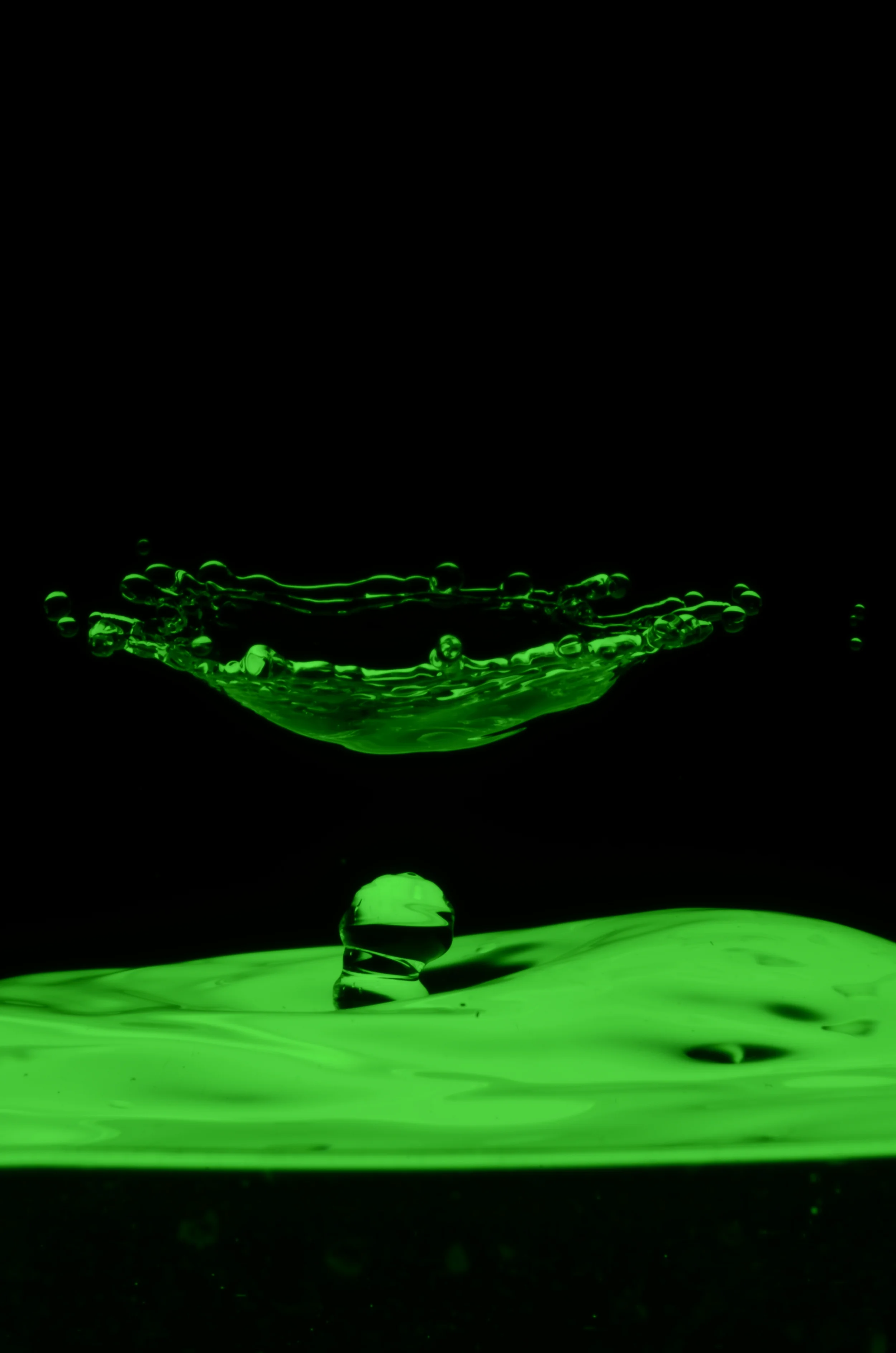
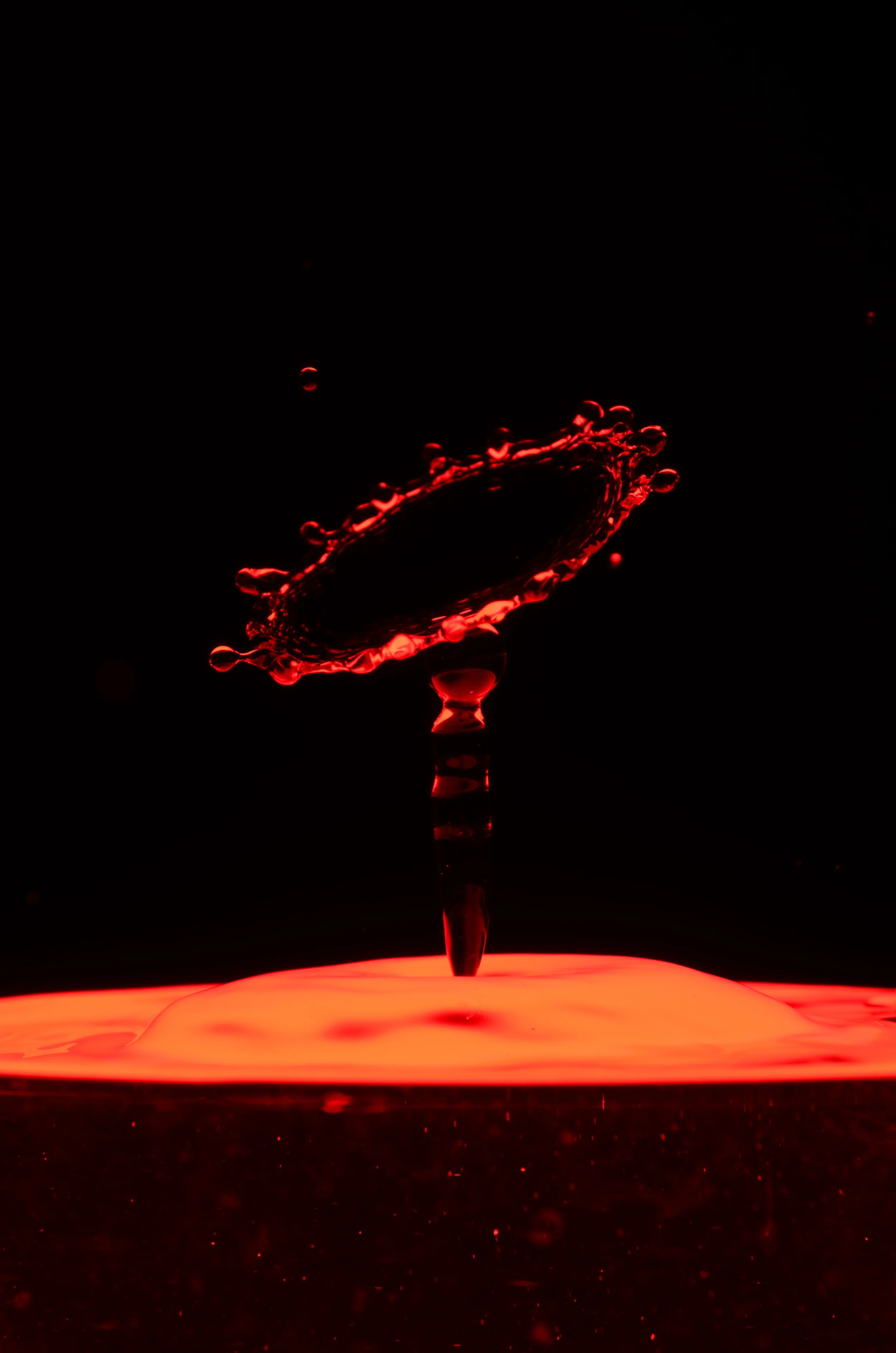



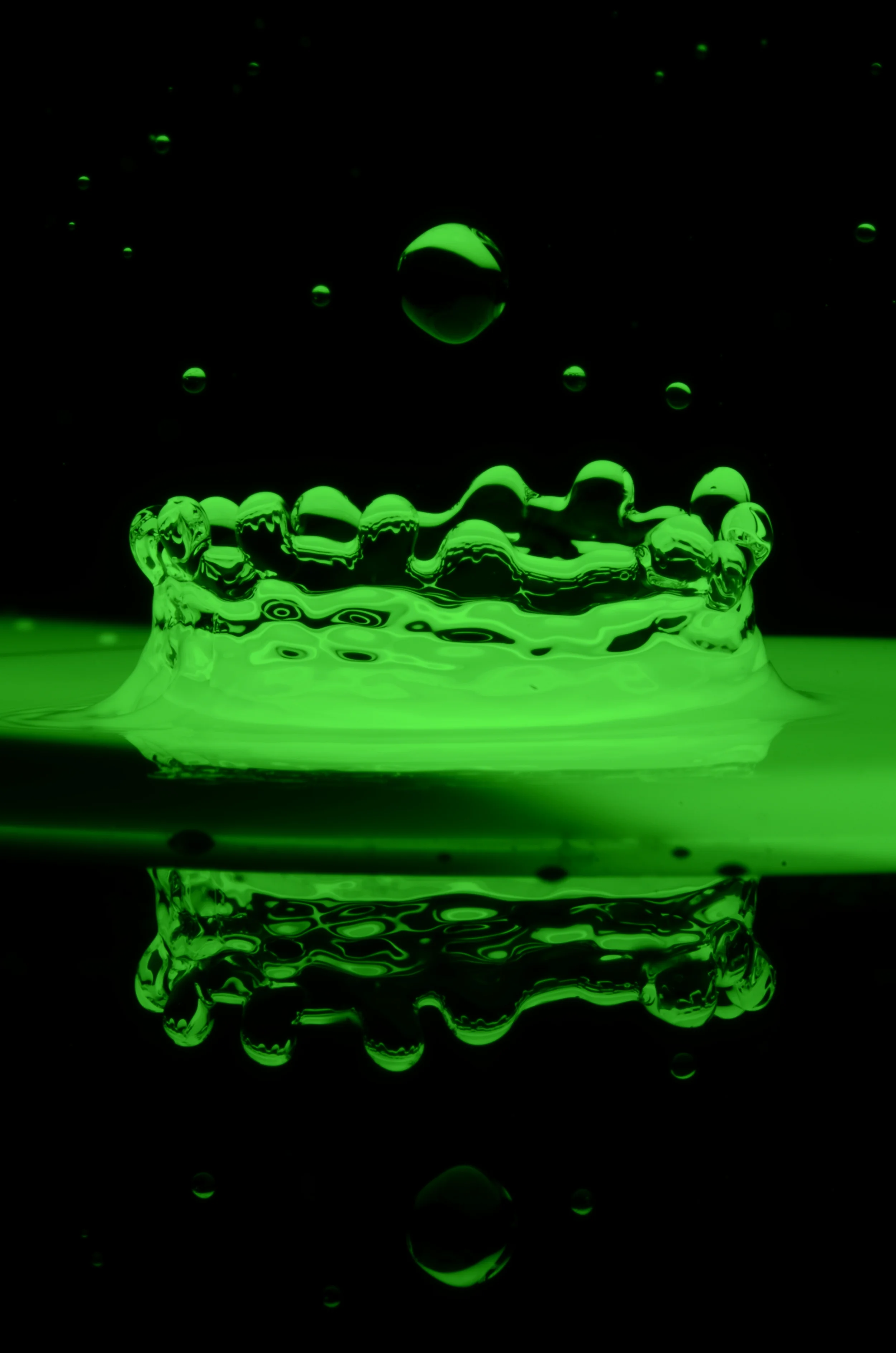

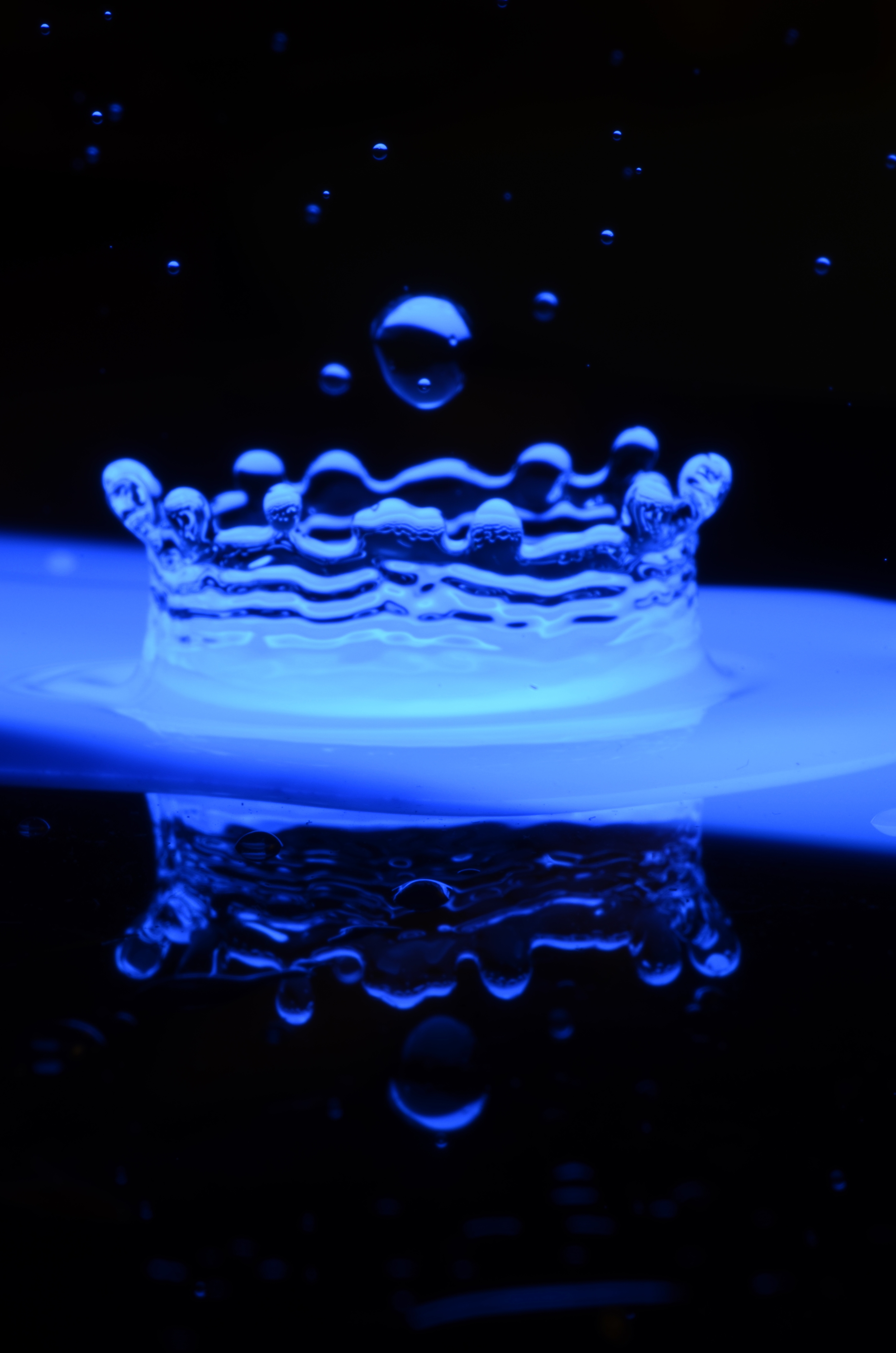
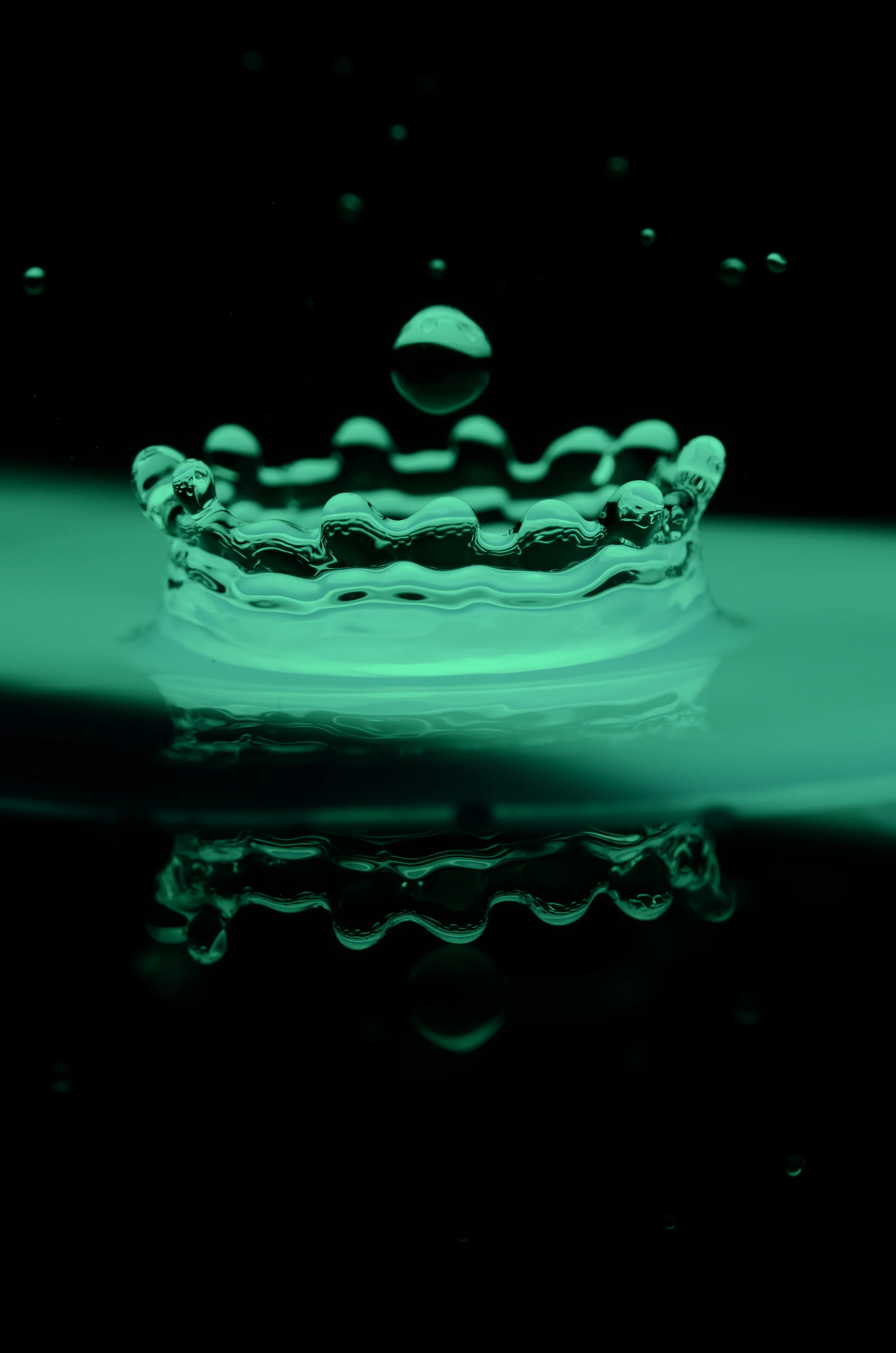


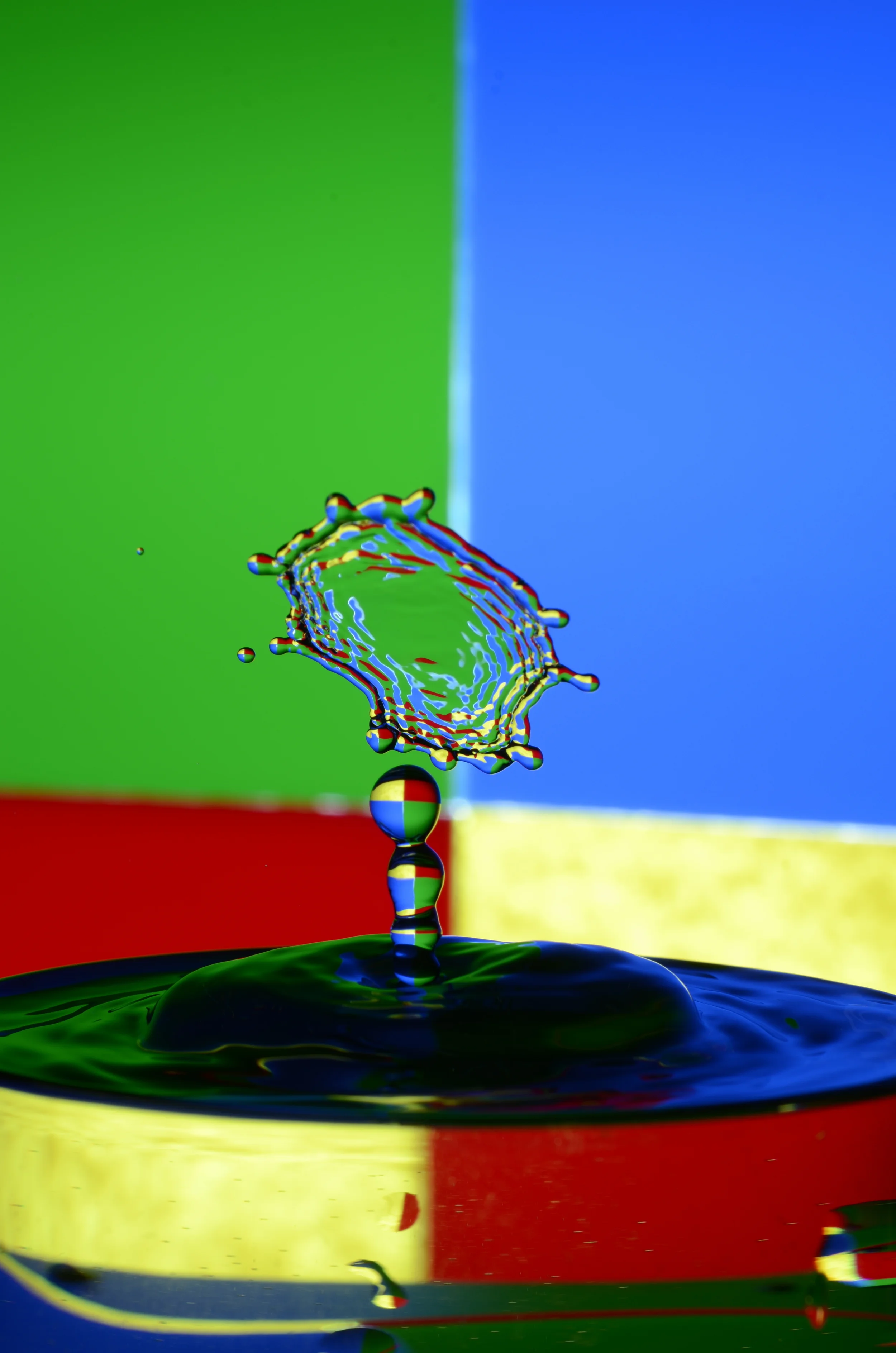



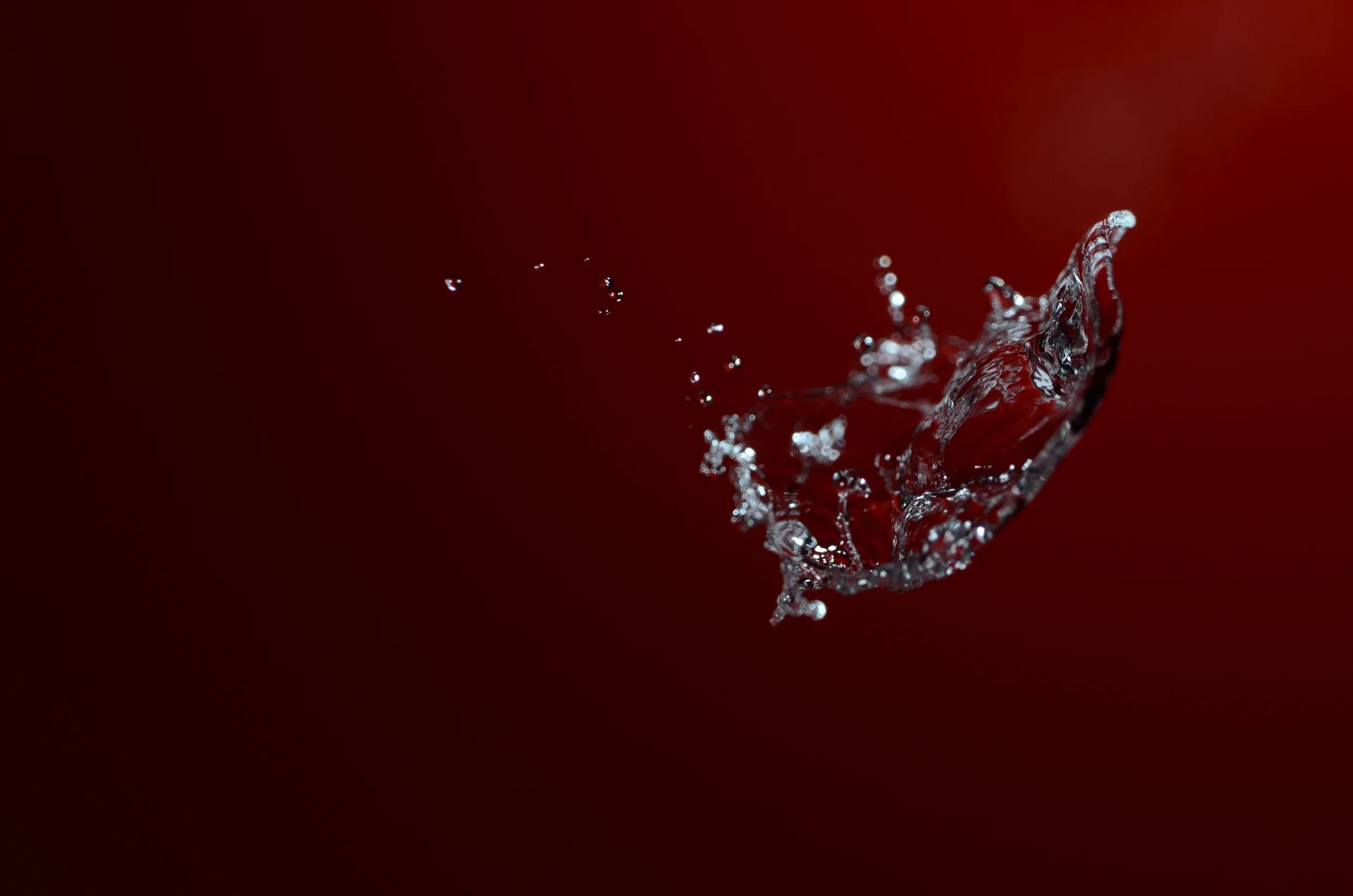

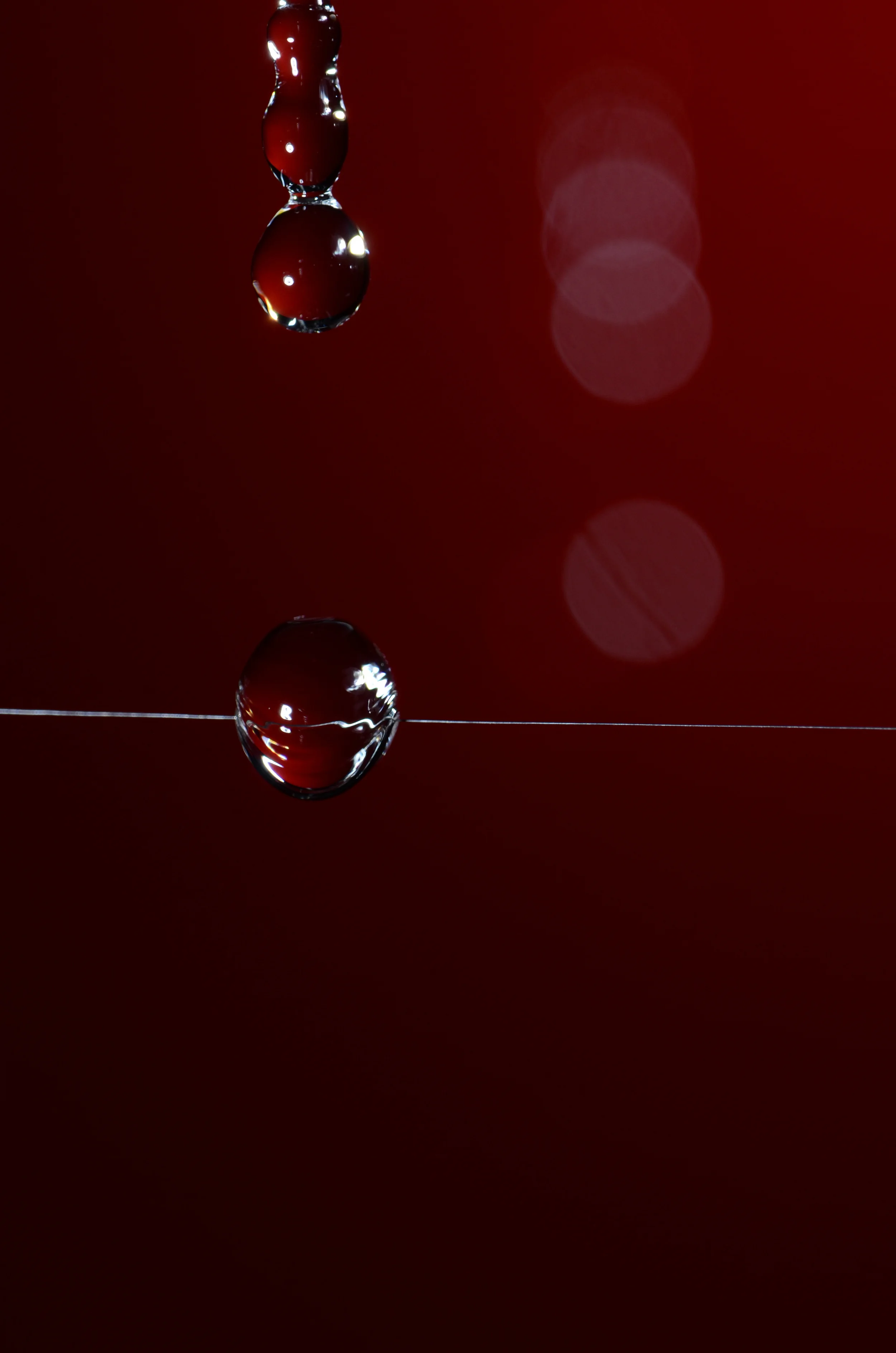




This image was produced by colliding a Worthington Jet (the spout of water that forms when a drop of water falls into a reservoir of water) with a second drop of water. When done in a manner that is correct in my opinion (your mileage may vary) the result is the formation of a thin sheet/disk of water over the top of the jet. If the jet is still moving briskly upwards when the second drop hits it, the result looks like image two in this title series. When the jet it moving upwards at about the same rate as the drop is falling, a flatter, leveler disk results. When the jet has even less energy, the disk looks like this. This image was lit from above, and from two sides by synchronized flashes. Image produced in collaboration with James Bales.